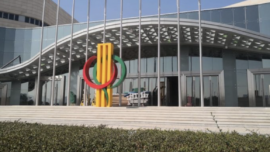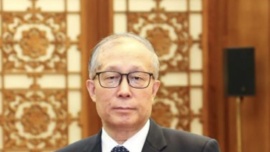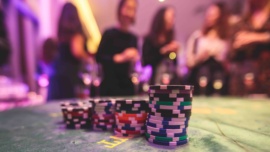Long seen as a safe investment during times of crisis, gold and silver assets saw prices rise considerably in 2020 as the pandemic progressed. Risk-averse investors flocked to these materials as a safe, recession-proof store of value and as the global supply was disrupted by the Covid-19 pandemic.
[The price of gold reached its highest ever point on August 7, 2020, when it traded for US$2,067 per troy ounce, with silver prices hitting a seven-year high when they breached US$29.14 an ounce by that same month.
However, disrupted silver mining operations have contributed to US$8.8 billion in losses in precious metals’ output in the first half of 2020 alone, according to Forbes.
Still, despite global mine closures in early 2020 and historic investment demand, the silver market actually saw its biggest surplus on record for the past 10 years.
At the same time, the total gold global supply fell by 4 per cent year-on-year in 2020 to 4,633 tonnes, the largest annual decline since 2013, according to the World Global Council, while annual mine production declined by 4 per cent to 3,401 tonnes.
The full-year recycled gold supply also rose by only 1 per cent year-on-year in 2020, despite record gold prices.
“Our business was impacted by the suspension in airline cargo. Gold is expensive and it will not be transported by ships but by air. Even last year I think the fourth quarter flights stopped and we couldn’t even trade. The money was there but gold cannot go. Mining operations also stopped. The business is recovering but it’s still maybe at one-third of pre-pandemic times,” the founder of gold supplier company KGMS (Macau) Company Limited, Ivan Leong, told Macau Business.
KGMS and its Hong Kong-based trading vehicle, Ultra Gold Ltd source most of their supply in Asia from the Philippines, Thailand, Laos, the Pacific states like the Solomon Islands, Fiji, and most African countries such as Ghana, Mali, Sierra Leone, Congo or Tanzania.
Just between 2013 to 2020, every year the gold trade in Hong Kong was estimated to have moved some HK$600 billion.
“We are now exploring supply lines in Portuguese-speaking countries like Mozambique and Angola,” Leong noted.
The gold businessman is also the Managing Director of the Portuguese Speaking Countries Precious Metal Exchange, a company created as a way to expand the supply of precious metals between Lusophone countries and the Greater Bay Area.
“Macau is looking for another industry to boost the economy so we are trying to use my existing network of gold trading in Hong Kong to extend securities operations with physical gold that can attract Chinese investors in the GBA that can run in dual-currency exchange platforms,” Leong tells MB.
“After all it is a free trade city. USD and RMB are easy to get here for settlements, and we know that African and South American countries need some Chinese consumer business. If we can build a two part system backed up by gold so that exchange can be active and people can invest in bullion, dores or even mining resources of different pricing”.

Coins and collectables
The same supply issues impacted the Royalex Group, the biggest retailer and wholesaler of precious metals in Macau, with President and CEO, Roy Long, telling MNA that Covid-19 halted the supply of most precious metals and, most importantly, halted all mining operations for the gold and silver the group mainly uses for its collectable coins business.
“The silver comes from South Africa or South America and Middle America. We still can purchase from the international market. The world is changed by the Covid-19 and the supply is not stable,” Long tells MNA.
Specializing in coin investing, souvenirs and gifts, and high-end collectable items, Royalex currently has six retail stores, mainly supplying coins to North America, Hong Kong, Singapore and other Chinese-speaking regions.
Despite the supply disruption, Long notes how, even after the pandemic, gold and silver are still seen as safe investment options without any debit.
The gold market is attracting a lot of attention as prices push back above US$1,900 in May for the first time this year after a two-month rally, while the annual average silver price in 2021 is expected to rise 33 per cent from last year’s level to reach US$27.30 per ounce, thanks to growth in industrial demand.
“The most needed products in the world are oil, which can be used for more than 33,000 different products, and second is silver which is used for almost 20,000 products. You can see that most of the IT products, like microchips, need silver […] Precious metals are always a good item.”
As for local jewellery retail businesses, the business environment remains challenging, even as visitor numbers reported in the SAR recover.
According to the Vice President of the Macau Goldsmiths Association, Lei Cheok Kuan, local jewellers have, on average, managed to recover their turnover to about 30 to 40 per cent of the amounts recorded before the pandemic, some even recovering as much as 60 per cent.
Despite this recovery he noted that for many retail stores, even if they receive purchase orders, stores are unable to accept all of them because many factories abroad remain closed.
“I anticipate that it will be difficult for the sector to fully recover business down to the pre-pandemic level as, in general, people have become more cautious in the way they spend money. Before, they assumed an attitude of ‘spend it all and win easily back’”
The number of visitors arriving in Macau continued to trend north in April, rising 5.3 per cent over March to some 794,819, however, this number remains a low comparison to pre-pandemic times, and visitors are just not spending as much as they used to.
Government data shows that the total value of retail sales of ‘Watches, Clocks & Jewellery’ dropped by 54 per cent in 2020 from the year prior to some MOP7.2 billion (US$909.3 million).
Even jewellery giant Chow Tai Fook, which operates five stores in Macau and Hong Kong, has reported that its average sale price for gold jewellery and products category has declined to HK$4,900 by the end of March of this year when compared to HK$5,900 in the previous quarter.
‘Challenging macros, pandemic development and closure of major border crossings continued weighing on the retail demand in Hong Kong and Macau during the Quarter,’ the group noted in its latest financial report.
About 120 jewellers are believed to be operating in the SAR, however, if pawnshops classified as ‘gold stores’ are included, the sector would include a total of 200 establishments.
The pandemic crisis has already led to the bankruptcy of fewer than 10 jewellers, the association leader revealed, with businesses in the sector resorting to an unpaid leave scheme to overcome the current challenging times.
A local jewellery retail businesswoman, who chose to not reveal her name, indicated that the business sector remains “very challenging” with “no signs of recovery yet”.
“We see more people and tourists in Macau but we have not really seen any benefits from it in the jewellery sector. I don’t see much improvement on sales at the moment”

KGMS (Macau) Company Limited
After graduating in hospitality in 2003 Ivan Leong spent two years doing some business in restaurants and shops, trying to bring brand shops to Macau, after which he jumped into trading for fine wines and food sectors
“It was then I got my hands first bucket of gold and earnings. This lasted until about 2012, by this time I had accumulated some of the profits and went into real estate investments, getting some small pieces of land and then building five-stores buildings.” Leong told MB.
After that he was approached to discuss precious metals trading since it’s a business that “always requires a lot of cash”.
“I met a guy that was in the industry for five years in Hong Kong, who just came with me to Macau to ask for some cash for trading, so I jumped into the industry in 2016-2017. We just travelled around the world, to Singapore, Japan, Taiwan and Middle Asia countries to know more about how gold trading operates”
The company operates its trading side in Hong Kong via a company named Ultra Gold Ltd. in Tsim Sha Tsui.

Royalex Group
Having invested in real estate for years, Roy Long told MB after the 2008 financial crisis he looked for an alternative market to invest.
“I started to learn precious metals, that’s when I learned about gold. I knew silver is in very short supply in the world and started to set up a platform and learned what is bullion,” he noted.
He then founded the Royalex Group with a first store that only offered 5 products, with its first bullion coming from South Africa.
The Royalex Group now specializes in the retailing of gold and silver coins and wholesaling of international collectible coins, with six retail stores, mainly supply supplying coins to North America, Hong Kong, Singapore and other Chinese-speaking regions.


“I represent more than 20 countries, and lots of mint coins. Every year I spend more than 100 days in other countries, we do a lot of collaborations […] We have partnerships with Singapore, New Zealand, Australia, Poland, Italy mints.”
The group’s Royalex Tower is also described as the largest retail store of gold and silver coins in Asia. The group has six branches in Macau, including its headquarters in Rua Pedro Nolasco da Silva.
Apart from precious metals retail, the group also represents the Macau mint, and offers B2B wholesale business, storage, buy-back, and wholesale services.
“Since 1979, the Macau Government has launched the first lunar year series in the world. It is the longest series in the world”.
























